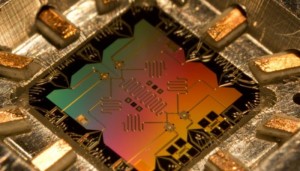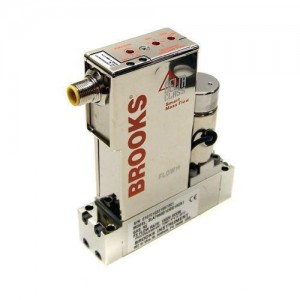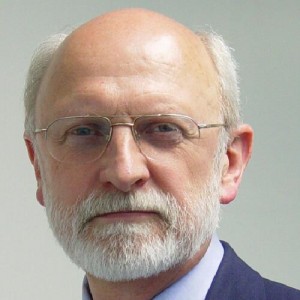 There have been many articles and books addressing how to “do” innovation and enumerate the various barriers. Innovation has been identified with increased competitiveness and even survival in today’s economy. However, the lack of innovation today has been decried by pundits and even governments. Companies, heralded in their early days as innovators, seem to flounder after a while. Other companies, who see the danger of being made irrelevant and try to become innovative, struggle to even break out of their own box. What is wrong? Why is innovation so hard and why is it so hard to sustain?
There have been many articles and books addressing how to “do” innovation and enumerate the various barriers. Innovation has been identified with increased competitiveness and even survival in today’s economy. However, the lack of innovation today has been decried by pundits and even governments. Companies, heralded in their early days as innovators, seem to flounder after a while. Other companies, who see the danger of being made irrelevant and try to become innovative, struggle to even break out of their own box. What is wrong? Why is innovation so hard and why is it so hard to sustain?
The answer is that an innovative company is in a metastable state. It is occupying a higher energy state. The barrier that prevents the company from falling back into a lower state of status quo is fairly low; lower for some than others. The barriers to innovation are the steep wall of energy one must scale to reach the metastable state. All the ways to kill innovation are the shallow wall of energy that the company can fall over back to the ground state. Maintaining the innovative state requires vigilance and work. It requires building a culture from the BoD and CEO to the janitorial staff. It requires retraining thought processes and breaking long held paradigms. Innovation has to become part of a company’s DNA. When it does the barrier to status quo gets higher, but not insurmountable. What does an innovative company look like? The profile I have is a composite of the innovative companies I have come into contact with. Most have most of the qualities in common. Several no longer exist because innovation was killed and subsequently the company, as well.
So, what does an innovative company look like? Is it the no-dress-code, flex-time, free-food, perks-plus environment? These might help with the current generation employee, but there are more fundamental characteristics of an innovative organization.
- Company leadership is committed to innovation. The leadership invests in the employees and trusts them. In turn, the employees develop a trust in the leadership.
- There is a “no fear”, “can do” mind-set throughout all functions in the company. The answer to the question, “Is it possible?” is not “No”, but “Not yet”.
- Many in the company are well educated, but all are constantly learning.
- There is a pervasive curiosity; consistently asking “Why?” and “What if?”
- There is also a “maker” mentality and the discipline to execute the processes to launch the new product or process.
- An innovative company will listen to the voice of the customer, but can discern real versus perceived needs.
- An innovative company is not efficient. Failure costs money; as does finding your way to discovery. That’s why you need high profit margins.
Typically, we think of Apple, Google, or Facebook as being exemplary. But I also think of the company I joined, fresh out of school, Hughes Aircraft. Hughes was a defense contractor with all of the restrictive regulations one associates with working with the DoD. Yet, they gave us practical laser technologies, wire bonding for semiconductor packaging, LCD technology employed in the first digital desktop projectors, 3D surround sound, back-of-the-seat in-flight entertainment, satellite TV, digital X-ray imaging, and ion propulsion engines for space travel. Well, the ion propulsion was a little early. It was repurposed into reactive ion etching used in semiconductor processing. One of the characteristics of Hughes leadership is that the CEO, up until the last one, was an engineer, often one who rose through the ranks. Hughes was a large company with about 90,000 employees at its peak. Not all the divisions fit the above profile. But two I worked at and others I worked with did. I remember a senior Air Force manager wishing aloud at a project review meeting for a particular microwave component with characteristics that were unprecedented. One of the project engineers slipped out during a break and returned with some samples and data. He presented the package to the slack-jawed manager with the question, “Like this?” We were provided means to explore and push boundaries, which enabled the engineer to anticipate needs before they were even voiced.
M&A has been identified as one of the ways to kill innovation. This was certainly a danger for Hughes when it was acquired by GM. There was some “brain-drain” when some of the more creative engineers left the company. The CEO was able to maintain the course and provided an additional direction toward automotive challenges. Some of the projects started were: heads up displays, digital instrument clusters, remote key locks, rear object detection, and collision avoidance.
However, it took a change in leadership to bring the company to its knees. The new CEO was not technically trained and was focused solely reducing costs. As cuts were made, more creative engineers left the company, fewer contracts were won, the bottom line suffered and therefore more cuts were made. The company was in a death spiral until it was sold off in parts to competitors. The loss of intellectual property was incalculable.
This is just one case I can cite from experience of an innovative company that was brought down because of a couple of the innovation killers that have been identified.





